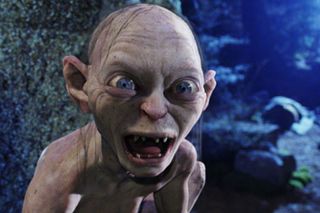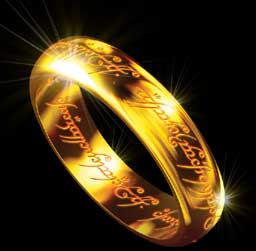But at least one liberal scholar has called the trilogy a “theological masterpiece,” and the U.S. Conference of Catholic Bishops rates the film “intelligent and well-crafted entertainment.”
*VOMIT*
LINK:
‘Golden Compass’ raises religious debate

Or, if you want to quibble about the word "lie," he is a dishonest man.
Here’s why:
Pullman is the author of the His Dark Materials trilogy, which is overtly anti-Christian and the first volume of which has been made into a movie titled The Golden Compass. Naturally, the Catholic League and its head Bill Donohue are warning parents against it, and Pullman is quoted as saying the following:
"To regard it as this Donohue man has said – that I’m a militant atheist,
and my intention is to convert people – how the hell does he know that?"
he said, in an interview with Newsweek magazine.
First, note that what we have here is a vehement non-denial denial. Pullman isn’t denying that he’s a militant atheist with the intention to convert people (at least in this quote; he may have made an actual denial elsewhere, in which case he’s a flat-out liar). He’s vehemently questioning how one would know that in order to convey the impression that he is not a militant atheist out to convert people and that he’s indignant at the statement that he is one.
Because it’s a non-denial denial, one can quibble over whether it constitutes a lie, just like one can quibble over whether various non-denial denials issued by the Nixon White House (or other White Houses) were technically lies, but the clear intent here is to deceive.
But let’s answer Pullman’s question: How "the hell" does Bill Donohue know that Pullman is a militant atheist out to convert people?
Because Pullman himself has said so!
In an interview published in
the Washington Post (Feb. 19, 2001), he stated:
“’I’m trying to undermine the basis of
Christian belief,’ says Pullman. ‘Mr. Lewis [C.S. Lewis, author of The Chronicles of Narnia] would think I
was doing the Devil’s work.’”
Similarly, in an interview published in the Sydney Morning
Herald (Dec. 13, 2003), Pullman stated:
“I’ve been surprised by how little
criticism I’ve got. Harry Potter’s been taking all the flak. I’m a great fan of
J.K. Rowling, but the people—mainly from America’s Bible Belt—who complain that
Harry Potter promotes Satanism or witchcraft obviously haven’t got enough in
their lives. Meanwhile, I’ve been flying under the radar, saying things that
are far more subversive than anything poor old Harry has said. My books are
about killing God.”
And indeed they are. In the end, the heroes of the novels
actually kill God.
So Pullman is simply being dishonest when he vehemently questions how anyone could know that he is a militant atheist out to convert people. He himself has made it abundantly clear in press interviews.
This kind of transparent disingenuity really makes Pullman come across as a small and pathetic individual.
For all the protestations atheists typically make about embracing truth rather than a fairy tale, it seems Mr. Pullman leaves something to be desired in the truth department.
And why not?
If, on his view, we’re just walking bags of chemicals then why shouldn’t the bag of chemicals that is Philip Pullman not spout any string of syllables needed in order to maximize its bank account and the amount of power it has to command pleasurable sensory feedback?








